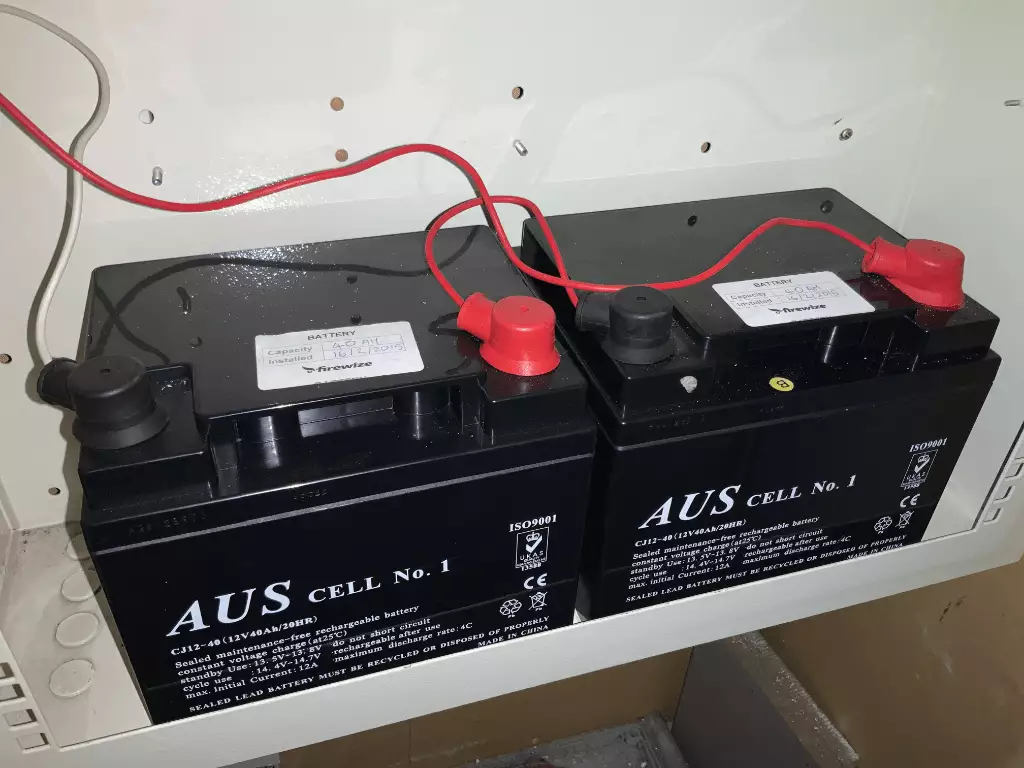
According to Australian Standard AS 1851:2012 there are 12 types of systems or equipment
- Alarm Signalling Equipment (Stand Alone) with power supply unit & batteries
- Fire Pumpsets (engine start)
- For Pumpsets (control batteries)
- Fire Detection and Alarm Systems
- Special Hazard Systems
- Smoke Hazard Systems
- Smoke Alarms & Heat Alarms
- Emergency Warning Systems
- Stand-alone Intercom systems
- Automatic Smoke & Heat Vents
- Fire Curtains & Smoke Curtains
- Motorised Relief Openings, Windows & Shutters
The batteries used in these systems fall into one of two categories;
The main feature of a standby battery is its ability to deliver a consistent supply of energy over an extended period of time, while the main feature of an engine start battery is its ability to deliver a significant amount of current over a short amount of time, necessary to start an engine.